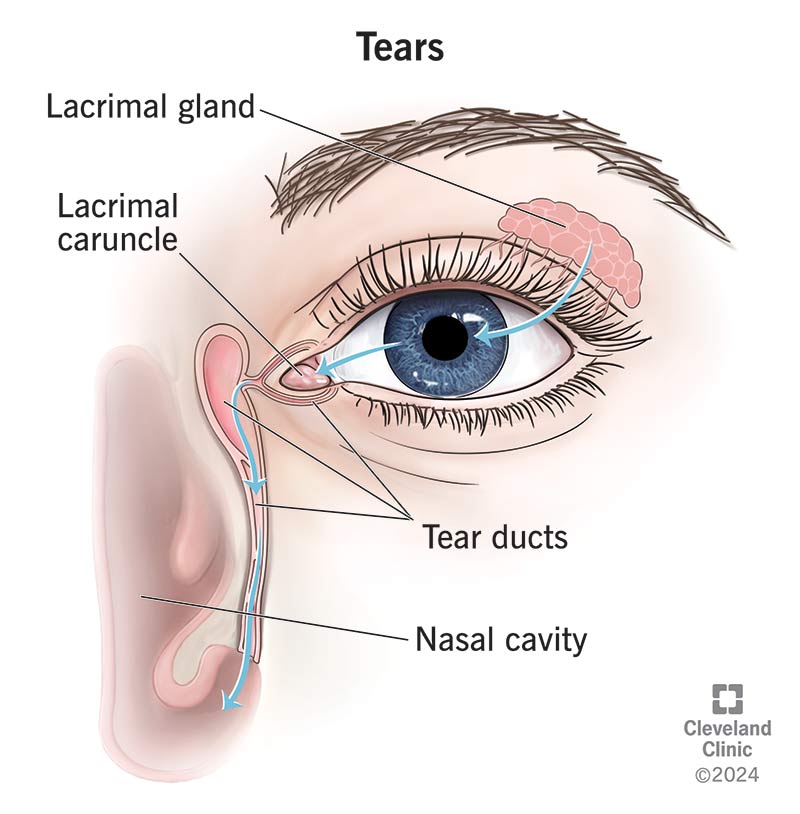Far from just a response to sadness, tears are a complex and vital part of eye health. They’re part of how your eyes stay clean by constantly flushing away irritants and debris. But tears are more than just a cleaning crew, too. They also contain antibacterial enzymes and proteins that fight infection and promote healing.
Advertisement
Cleveland Clinic is a non-profit academic medical center. Advertising on our site helps support our mission. We do not endorse non-Cleveland Clinic products or services. Policy
Tears are the clear, salty fluid that the glands above your eyes produce and release. They’re made up of water, oil and mucus. Tears have several important functions. They:
Advertisement
Cleveland Clinic is a non-profit academic medical center. Advertising on our site helps support our mission. We do not endorse non-Cleveland Clinic products or services. Policy
You may not think about your tears very often, but they’re an important part of your eye health. They’re not just for crying. If you have an issue with your tears, it can lead to several different conditions and disorders that can affect your eyes. If you have dry or watery eyes, don’t wait to see an eye care specialist. They can help determine what’s going on with your eyes and provide the appropriate treatment.
Your eyes produce three types of tears: basal tears, reflex tears and emotional tears. Each type has a different function.
Advertisement

Tears have a similar structure to saliva. While they’re made up mostly of water, they also contain electrolytes, lipids, enzymes and more. Each tear your eye produces has three different layers, which together, make up the tear film:
Tears are salty because they contain electrolytes, or salt ions, like sodium, potassium, calcium and magnesium. Each of your tears contains about 0.3 milligrams (mg) worth of salt.
Tears come from your meibomian glands, goblet cells and lacrimal glands. You can find these exocrine glands at the upper outside corner of your eyes. That’s why the medical term for shedding tears is “lacrimation.” When you blink, tears move across your eyes. They then drain into your tear ducts that empty into the back of your nose. There, they’ll either evaporate or be reabsorbed.
Conditions that can affect your tears usually cause you to produce too few or too many tears. Or tears might drain too quickly or too slowly from your eyes. Conditions that affect tears include:
An eye care specialist will give you a thorough eye exam. Other tests they may use include:
Advertisement
There are many possible treatment options for conditions that affect your tears. These range from eye drops to antibiotics to surgery. Your healthcare provider is the best person to tell you what treatment options are best for you and your condition.
You should see an ophthalmologist regularly to keep up to date on your eye health. But there are many other things you can do to help keep your eyes well-lubricated and healthy, including:
Advertisement
While tears may seem like just a reaction to emotions, they’re a constantly flowing shield for your eyes. These unsung heroes wash away irritants, fight infection and keep your vision clear. So, if you experience dryness, burning or continuous watering, see an eye care specialist — it could be a sign of a treatable issue involving your tears.
Advertisement
Cleveland Clinic’s ophthalmologists and optometrists have the highest training available. We provide exams, vision correction and care for many eye conditions.

Last reviewed on 01/08/2025.
Learn more about the Health Library and our editorial process.